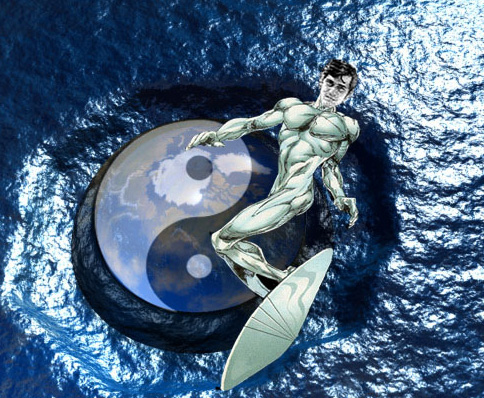Last month I put together a bubble and an orgone field generator with mirrored bases facing each other, making a closed scalar feedback loop. I used what I had on hand, which was two completely different systems making one unit. I wondered if this was the best architecture for what I had in mind. The only thing I could do is repeat the experiment with two similar systems and study the results.
The other day I built twin bubbles for this experiment. Assembly was done at the same time for both units for quality control. In other builds I hot glued ear buds to a chunk of extremely dense orgonite so I could inject frequency, if needed. It worked pretty good to boost the output on the last project but I couldn't help thinking there's got to be a better way than ear buds on orgonite. I rummaged through my box of scraps and found some mobius coils small enough to sandwich between two chunks of orgonite. This will allow me to pump raw frequency through the piece rather than the diminished sounds through the ear buds. I mean, what was I thinking? Ear buds instead of a mobius? Paleeese...
I tested both units and the mobius is definitely superior. My way of thinking is, the lower density of the cement in the bubble should stimulate these orgonite units to produce more which will, in turn, amplify the unit to a whole nuther level. Adding frequency will kick it into high gear. We'll see how that idea pans out.
The only difference between these two pieces is the internal violet ray electrodes. One unit is steel wool and the other is copper mesh. I figure, as long as I'm working with twin units I may as well include one difference to see which material is better or if there's no difference at all.
Metallic spray paint has metal particles small enough to go through the spray orifice. Particles that small need to be at the base and a couple squirts of metallic spray paint is a no-brainer. I had to use something that would stay put, otherwise the cement would knock it out of place at the first pour. I also added a pinch of powdered copper to the paint before it dried.
The cement mixture is a Portland cement/sand mixture because Portland is hard to find around here. The only Portland cement I found was at my local hardware store, hard as a rock and totally useless. I'm not sure of the cement/sand proportion but this will have to do. The mix also includes aluminum chips and brass key dust in progressively lower densities and topped with plaster and glue to make the plaster more durable.
The violet ray and inferred have been on these for two days. They won't be ready for another week but that gives me time to locate a couple satellite dishes and adhesive Mylar to complete this project.
I'm still undecided if I should connect the two units pipe to pipe or if I should leave a gap, Lakhovsky style.
I'll keep ya posted.
Thursday, September 19, 2019
Subscribe to:
Post Comments (Atom)





No comments:
Post a Comment